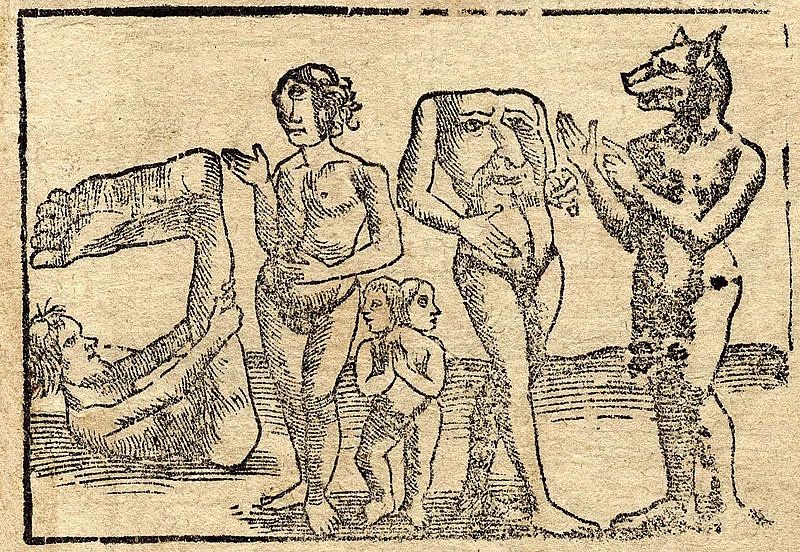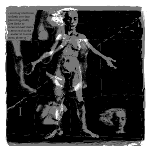
Modern Monsters
A mindless man, limbs rotting off his body, roams the streets—and infects others with his bite. A thirty-foot tall humanoid breaks past the city barriers in order to feast on the felling humans within. A beautiful, seductive woman promises friendship and delights, only to drink the blood of her victims from their necks. A strange land seems normal, until headless humans walk up with their faces on their chests.
Monsters invade our society, seeping into the corners of our fears and desires, patrolling the borders of what society deems allowable, and marking the other as always strange and dangerous. Zombie apocalypses turn into commentaries on the AIDS epidemic. Vampires reveal latent homoerotic fears—and desires. Terrifying, colossal titans outside the city borders remind us to stay within the cultural confines of society, and the homunculi remind us that other nations and cultures are full of strange and terrifying peoples. A monster is never just what it seems. A monster reveals our deep-seated cultural fears.
The Book
This book is a collaborative effort of eighteen different authors, all students enrolled in the 2022 Multimodal Composition course at the University of Washington in Seattle. Each author introduces a unique “modern monster” that students grappled with over the span of ten weeks. The result is eighteen different monsters from a variety of cultural contexts, each connected to real-world problems and fears faced by society today. Inside you’ll find monstrosities such as pollution, xenophobia, mental health crises, genocide, and poverty. Each chapter asks us to confront the reality that many of our cultural realities are monstrous.
Grounded in Jeffrey Jerome Cohen’s “Monster Culture (Seven Theses),” this book is arranged in six sections, each based on one of Cohen’s monster theses:
- The Monster’s Body is a Cultural Body
- The Monster Always Escapes
- The Monster is the Harbinger of Category Crisis
- The Monster Dwells at the Gate of Difference
- The Monster Polices the Borders of the Possible
- Fear of the Monster is Really a Kind of Desire
- The Monster Stands at the Threshold … of Becoming
Each section is then subdivided into three chapters, each with a different author and a different monster. The variety of texts, authors, and monsters in this book creates a multi-faceted approach to the topic that makes space for a wide variety of perspectives, priorities, and concerns not typically seen in collaborative work of this scale.

This book, in a way, is a monster itself—a conglomeration of ideas, fears, and theses stitched together to create something new, something frightening in its cohesion.
It is our hope that reading this book offers a new, albeit terrifying, perceptive on reality. What monsters lurk in your shadows?
